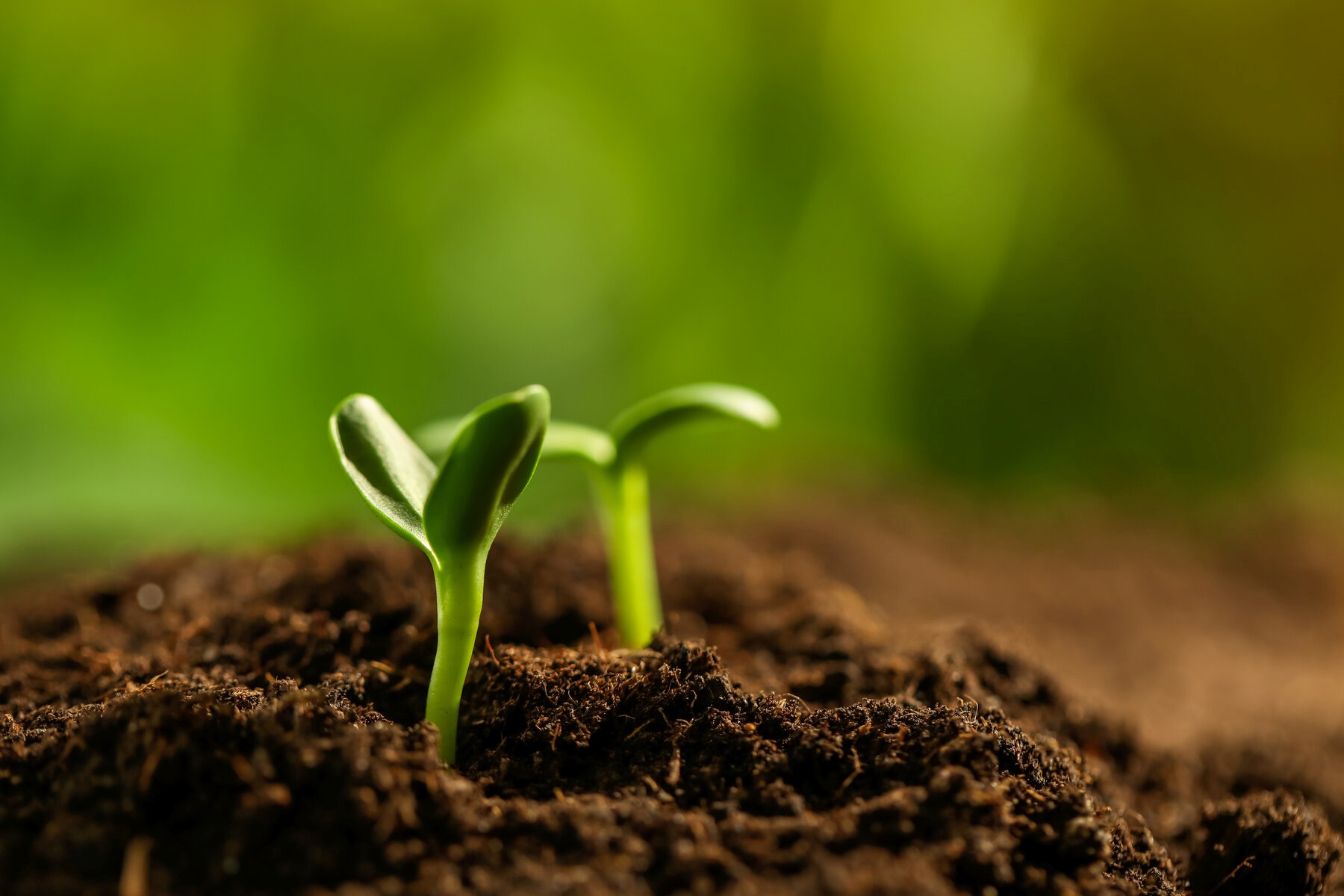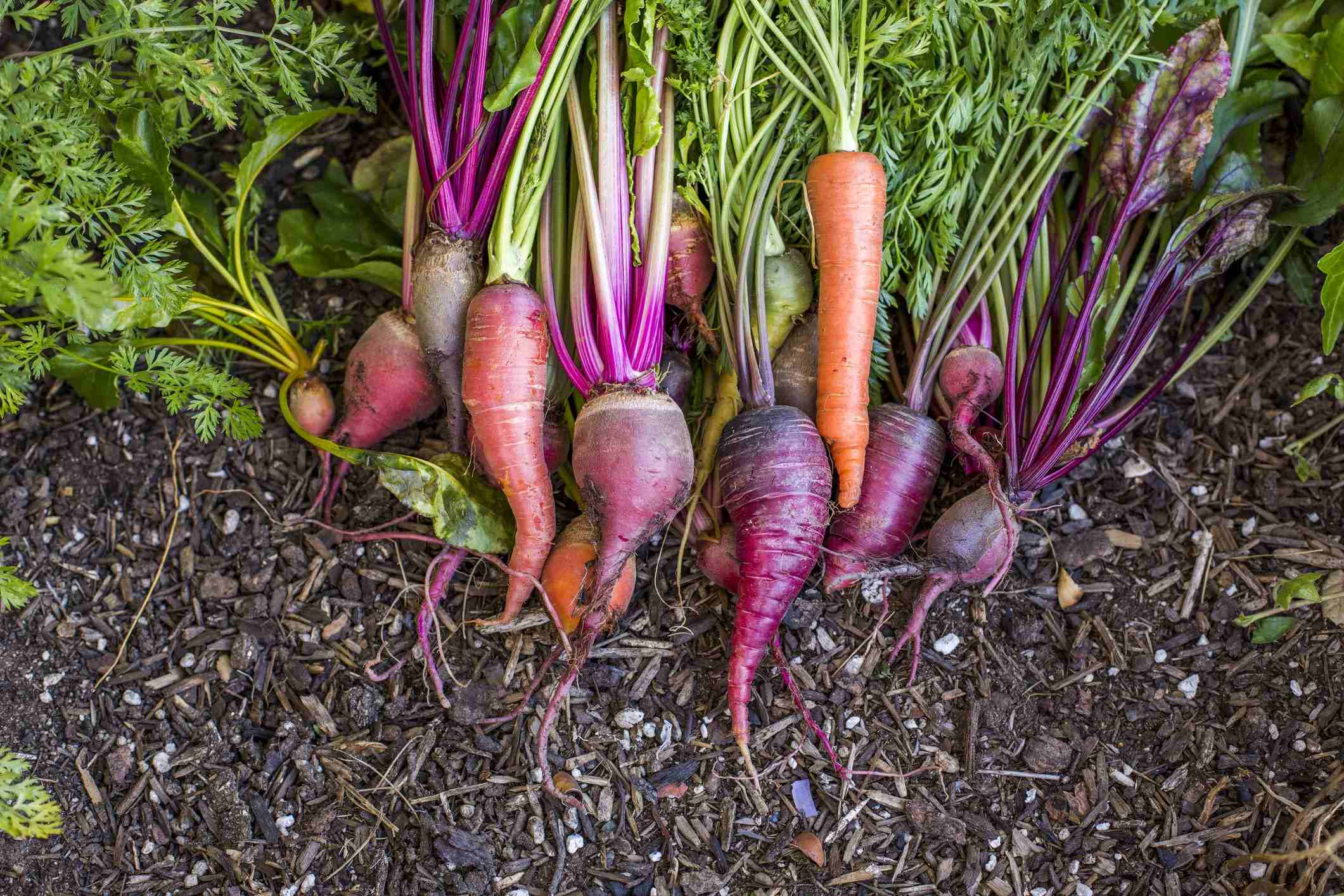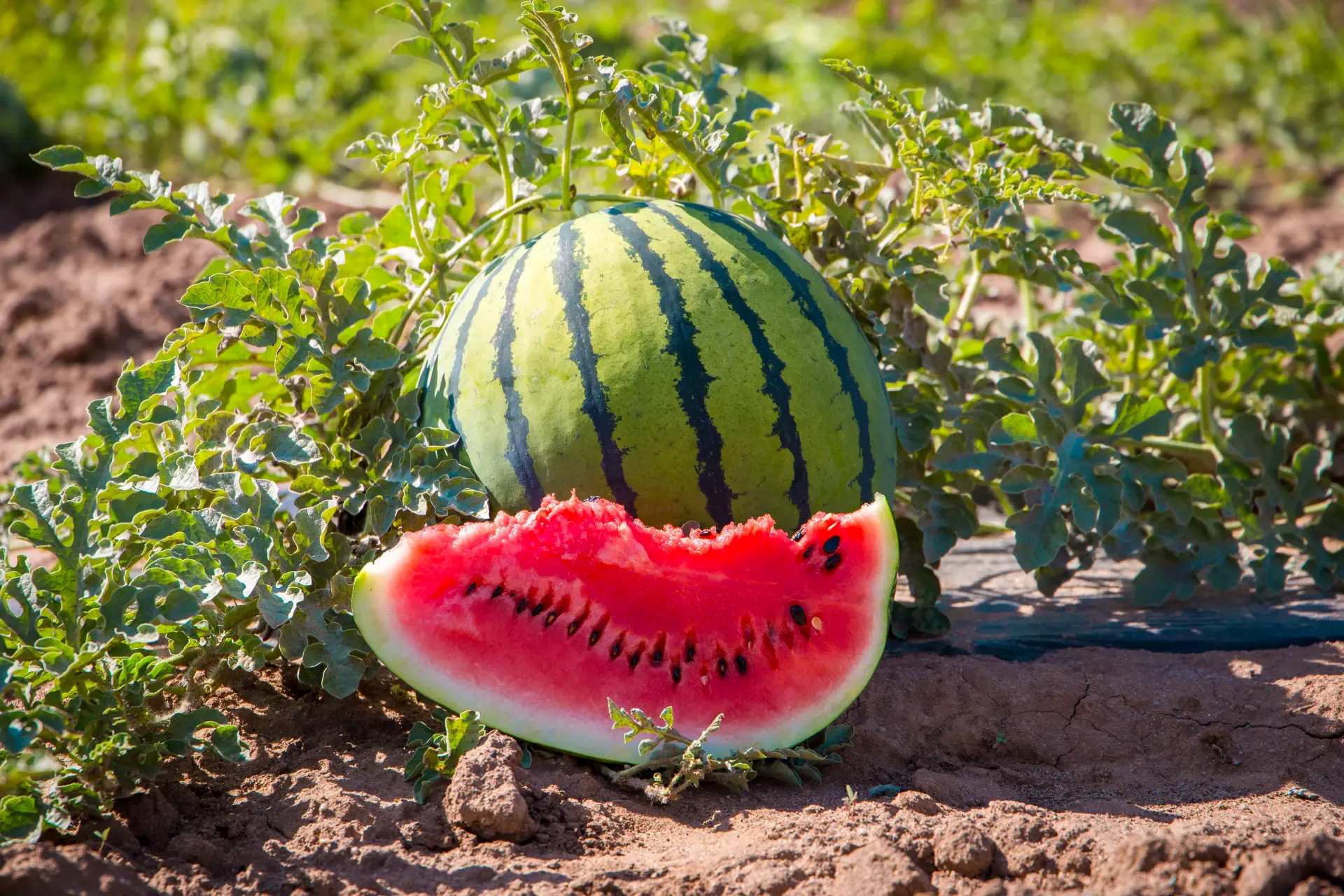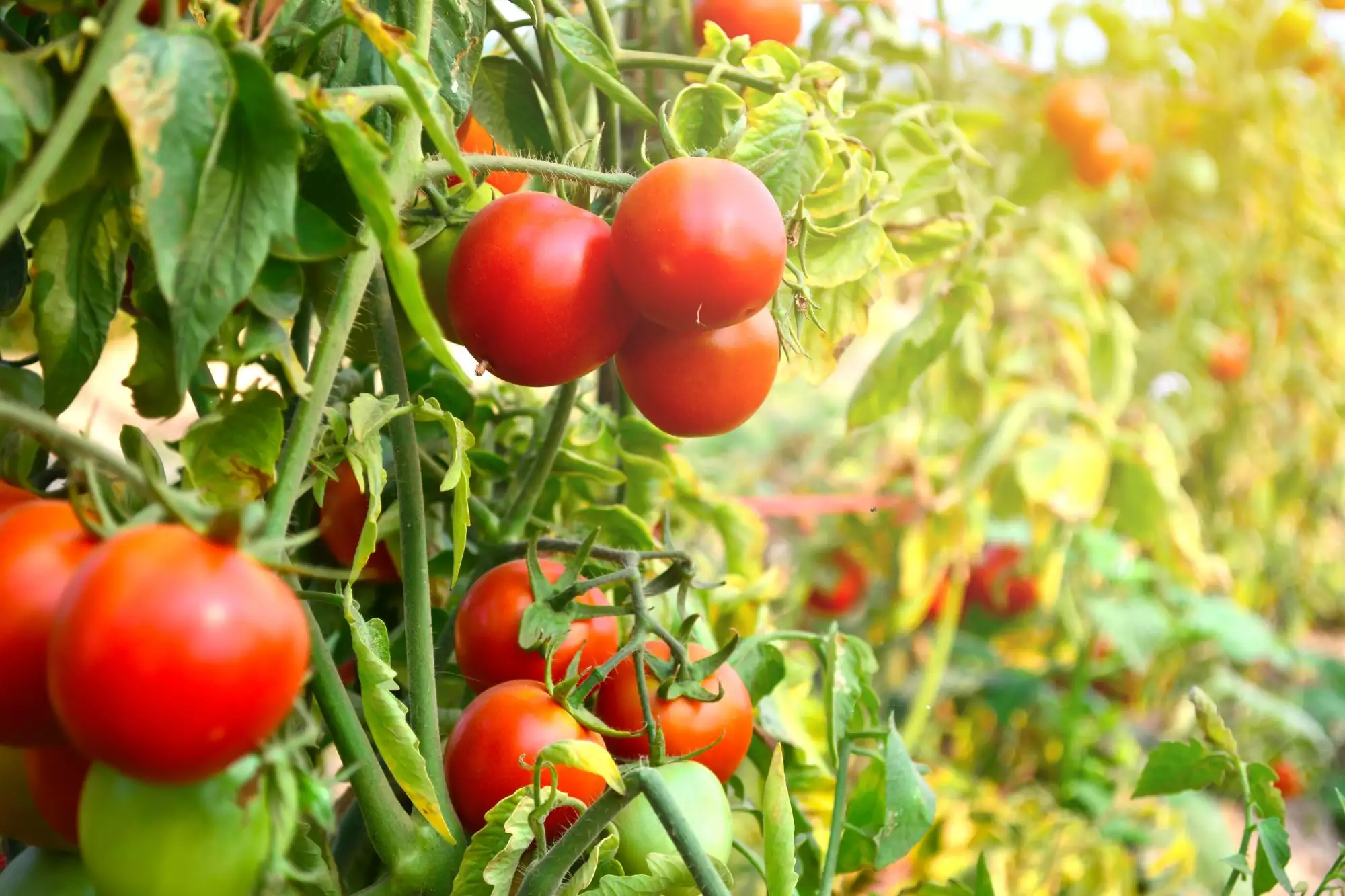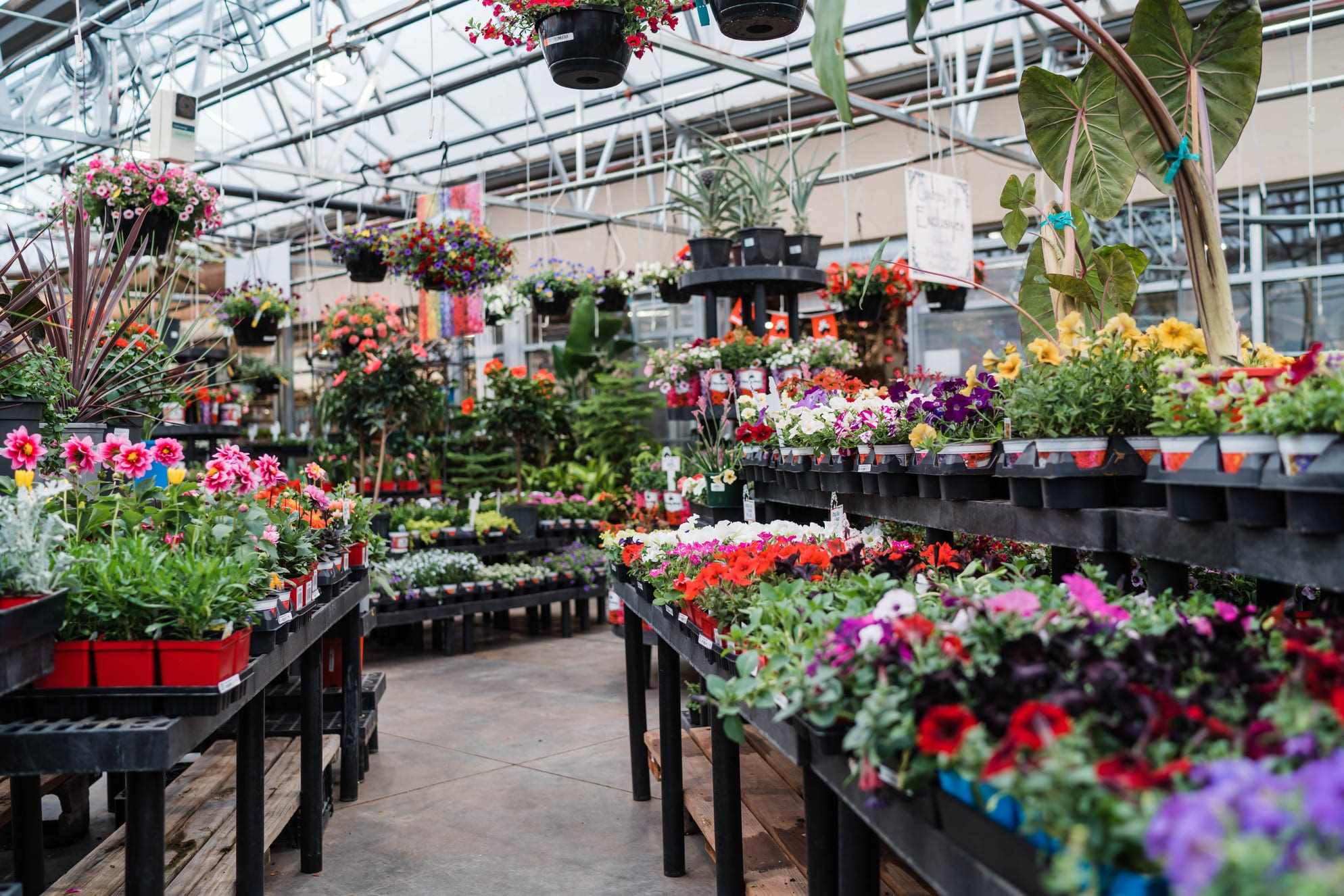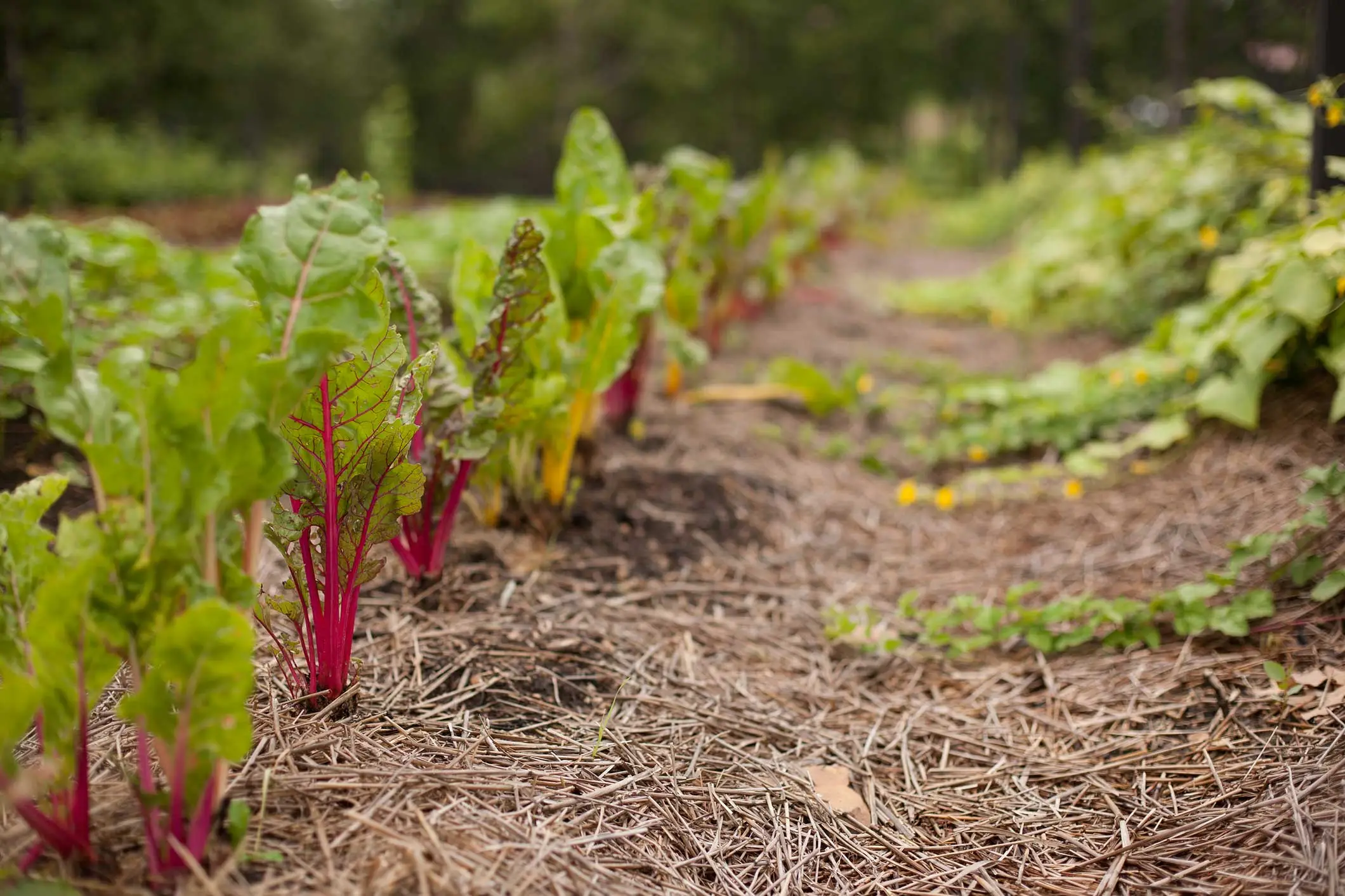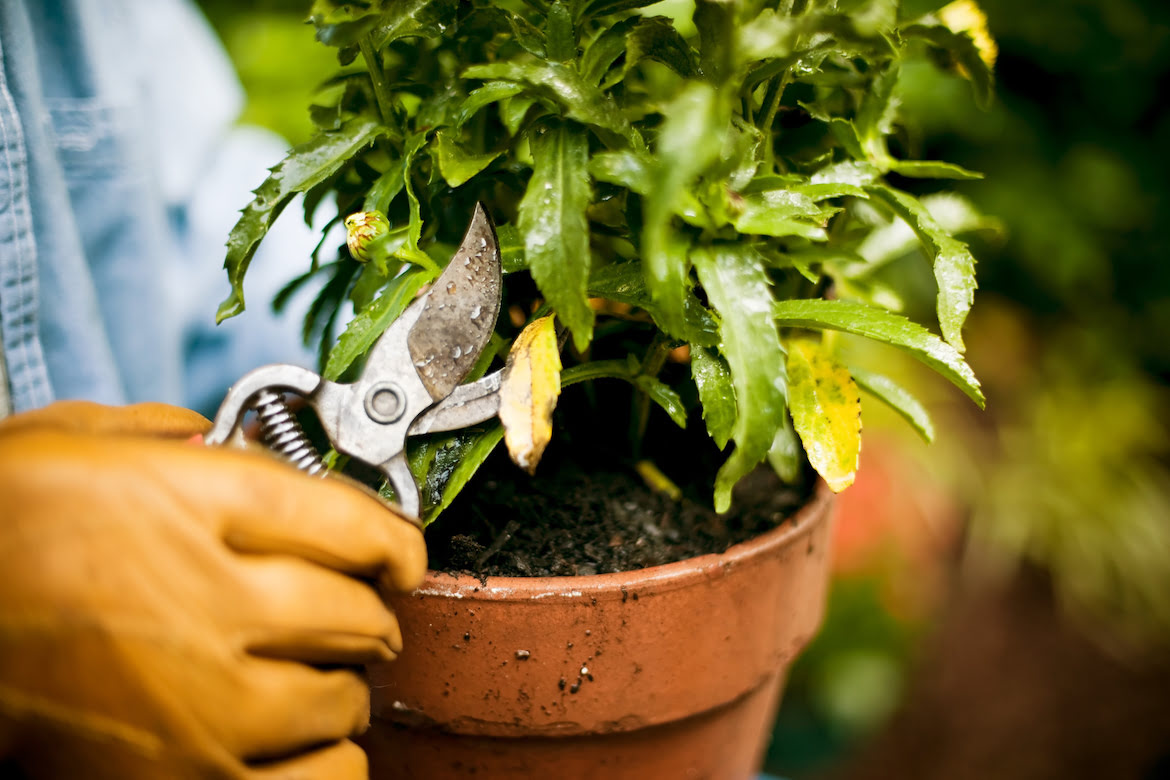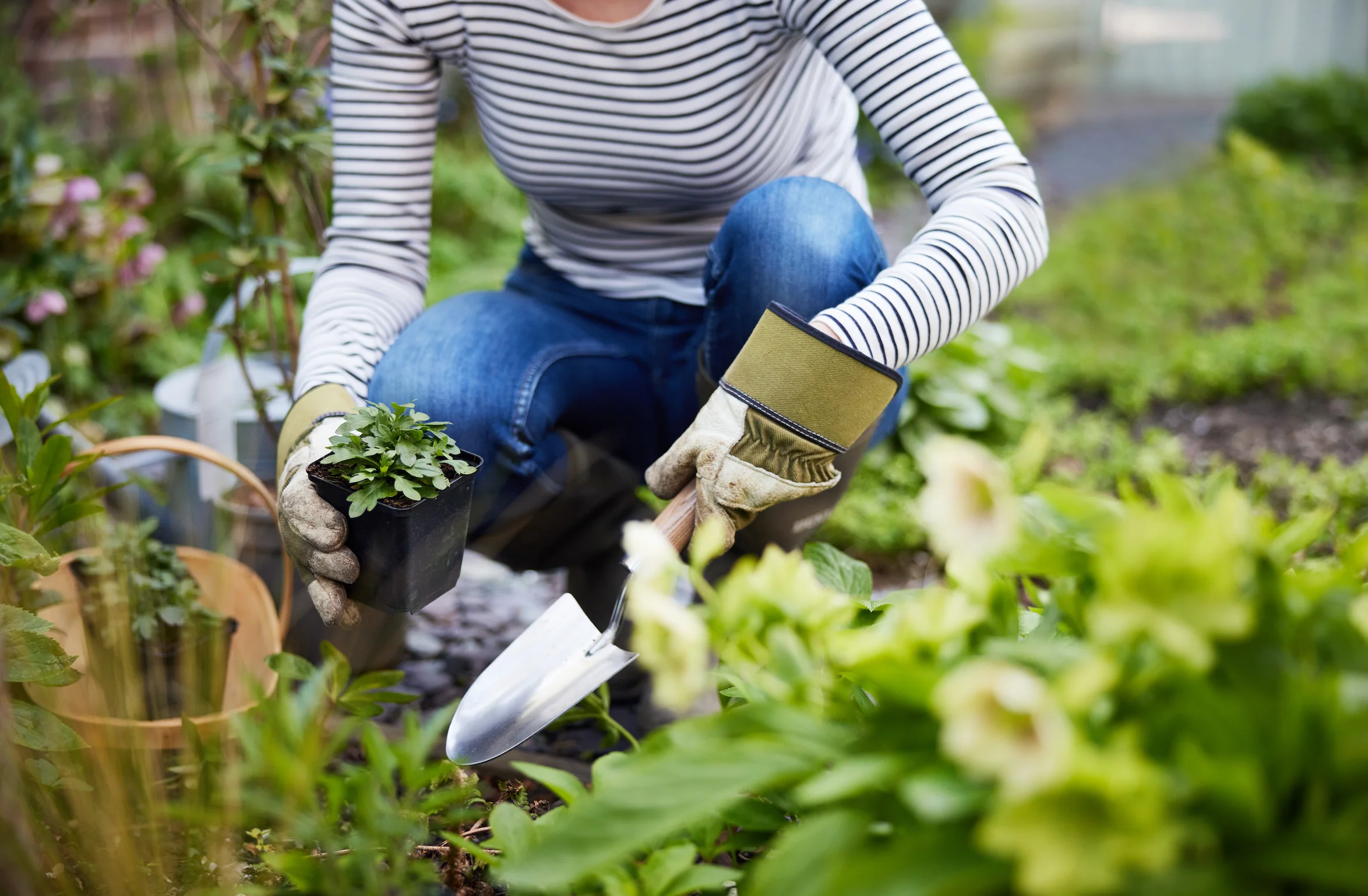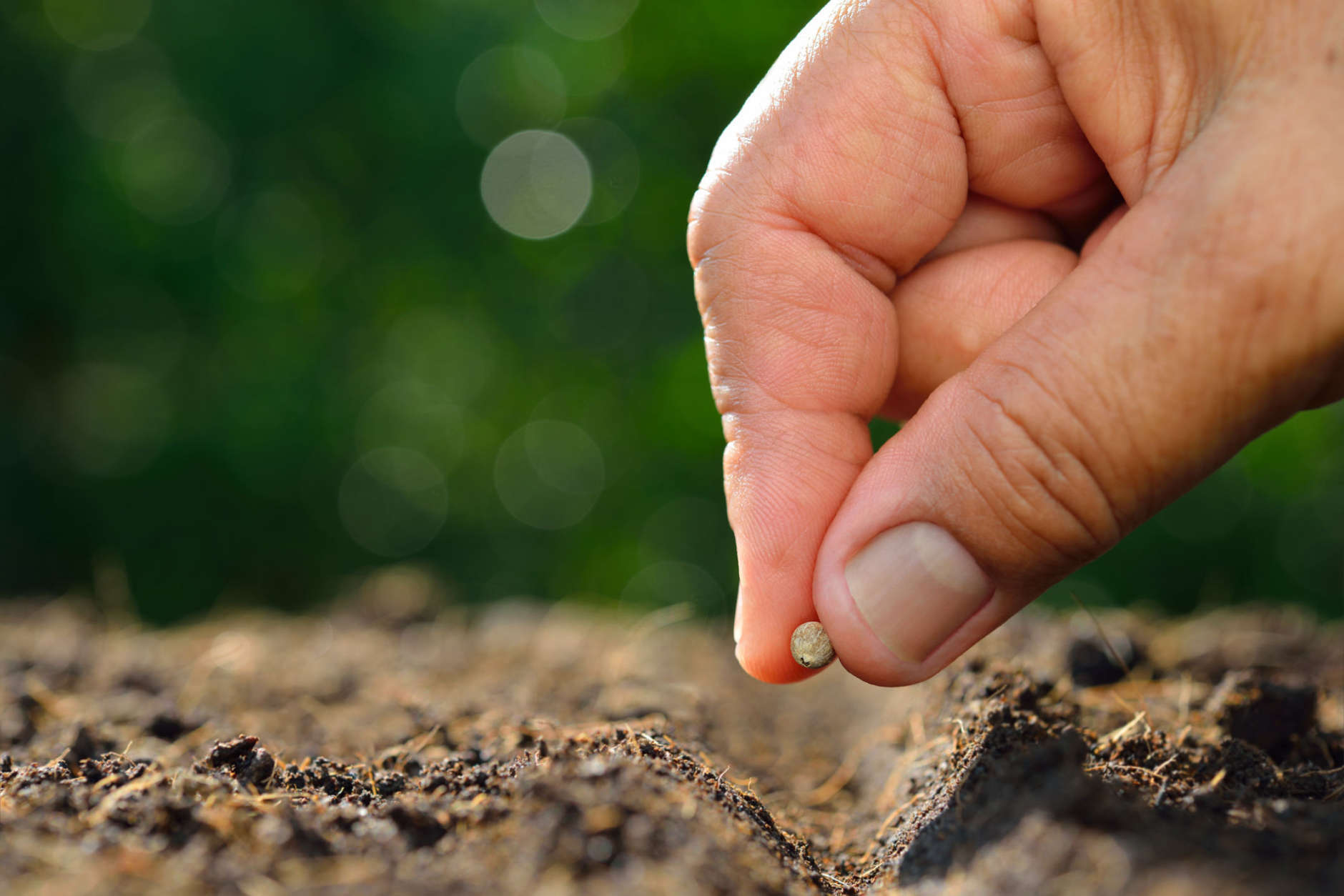Home>Gardening Techniques>Seasonal Gardening>When To Start Planting Flowers


Seasonal Gardening
When To Start Planting Flowers
Modified: January 22, 2024
Discover the best time to start planting flowers with our comprehensive guide to seasonal gardening. Plan your garden and create stunning floral displays.
(Many of the links in this article redirect to a specific reviewed product. Your purchase of these products through affiliate links helps to generate commission for Chicagolandgardening.com, at no extra cost. Learn more)
Table of Contents
Introduction
Welcome to the wonderful world of seasonal gardening! Whether you’re a seasoned gardener or just starting out, understanding the timing of planting flowers is crucial for a successful and vibrant garden. Knowing when to start planting can greatly impact the growth and blooming of your flowers, ensuring a beautiful display throughout the year.
Timing is everything when it comes to gardening, and planting flowers at the right time can make a significant difference in their overall health and longevity. In this article, we will explore the factors to consider when determining the ideal time to start planting flowers. By taking into account the climate, soil conditions, planting zone, and other essential factors, you’ll be able to plan out your garden with confidence.
Whether you’re interested in annual or perennial flowers, knowing when to start planting can help you maximize their potential. By understanding the benefits and risks associated with early and late planting, you can make informed decisions that will give your flowers the best chance to thrive.
So, if you’re ready to dive into the world of seasonal gardening and discover the optimal time to start planting flowers, let’s get started!
Factors to Consider
When it comes to determining the ideal time for planting flowers, several factors should be considered. These factors include climate and season, soil conditions, planting zone, and planting schedule. Let’s take a closer look at each of these factors:
Climate and Season
The climate and season of your area play a significant role in determining when to start planting flowers. Understanding the average frost dates, temperature fluctuations, and weather patterns in your region is crucial. Some flowers thrive in cooler temperatures, while others prefer warmer conditions. By researching the climate and seasonality of your area, you’ll be able to choose flowers that are well-suited to your specific conditions.
Soil Conditions
The quality and condition of your soil are another important factor to consider. Different flowers have specific soil preferences, such as pH levels, drainage, and nutrient requirements. Testing your soil for pH levels and making any necessary amendments will ensure that your flowers have the best chance of growing healthy and strong. Additionally, soil moisture levels should be taken into account, as some flowers prefer well-drained soil while others thrive in more damp conditions.
Planting Zone
Understanding your planting zone is essential for successful gardening. Planting zones are determined based on average temperatures and frost dates, and they can vary significantly from one region to another. By identifying your planting zone, you can determine the most suitable flowers for your area and the appropriate time to start planting them.
Planting Schedule
Creating a planting schedule can help you stay organized and ensure that you’re planting your flowers at the right time. Certain flowers may require starting seeds indoors or utilizing techniques like stratification or scarification. By planning ahead, you can coordinate your planting schedule according to the specific needs of each flower variety, ensuring optimal growth and blooming.
By considering these factors, you can make informed decisions about when to start planting flowers in your garden. Understanding the unique requirements of your area and specific flower varieties will give you the best chance of a successful, thriving garden.
Climate and Season
One of the primary factors to consider when determining the ideal time to start planting flowers is the climate and season of your area. Every flower has its own specific temperature and climate preferences, and understanding these requirements is essential for their successful growth and blooming.
Before you start planting, it’s crucial to research the average frost dates, temperature fluctuations, and weather patterns in your region. This information will help you identify the best time to begin planting flowers. For example, some flowers thrive in cooler temperatures and can tolerate light frosts, while others require warmer conditions to germinate and grow.
In areas with mild climates, where frost is less of a concern, you may have more flexibility in when you can start planting. However, it’s still important to consider the seasonal changes and temperature variations that occur throughout the year. By aligning your planting with the natural cycle of the seasons, you can take advantage of the optimal conditions for your chosen flower varieties.
For regions with pronounced seasonal changes and distinct winter months, it’s crucial to wait until the danger of frost has passed before planting your flowers. Starting too early can expose them to potential damage from late frosts or cold snaps. On the other hand, waiting too long into the summer season can cause challenges for heat-sensitive flowers.
Understanding the specific temperature requirements of your flower varieties is also important. Some flowers, such as pansies and snapdragons, can tolerate cooler temperatures and are great choices for early spring or late fall planting. Other flowers, like marigolds and zinnias, prefer warmer conditions and should be planted when the soil and air temperatures are consistently higher.
By researching the climate and seasonal patterns of your area, you can make informed decisions about when to start planting flowers. Consider the temperature preferences of your chosen flower varieties and align your planting schedule accordingly. This will provide the best conditions for optimal growth and blooming, ensuring a beautiful and thriving garden.
Soil Conditions
The quality and condition of your soil play a crucial role in the success of your flower garden. Before you start planting, it’s important to assess and understand the specific soil conditions in your garden.
One of the key factors to consider is the pH level of your soil. Most flowers prefer a slightly acidic to neutral pH, around 6.0 to 7.0. However, there are some exceptions, such as acid-loving flowers like hydrangeas and azaleas that thrive in more acidic soil. Testing your soil’s pH level will help you determine if any adjustments are necessary for optimal flower growth.
In addition to pH, soil drainage is another essential factor to consider. Flowers generally prefer well-draining soil that allows excess water to flow through easily. If your soil is heavy and retains water, it can lead to root rot and other water-related issues. On the other hand, if your soil drains too quickly, your flowers may suffer from drought stress. Amending your soil with organic matter, such as compost or peat moss, can improve drainage and create the ideal environment for healthy root development.
Nutrient levels in the soil also play a vital role in flower growth. Different flowers have varying nutrient requirements, and deficiencies can result in stunted growth or poor flowering. Conducting a soil test can help you identify any nutrient imbalances and guide you in adding the appropriate fertilizers or organic amendments.
In addition to pH, drainage, and nutrient levels, it’s also important to consider soil moisture content. While some flowers thrive in moist soil, others prefer drier conditions. Knowing the moisture preference of your flower varieties will help you determine the watering schedule and irrigation needs.
Overall, understanding and addressing the soil conditions in your garden is essential for successful flower planting. Testing the pH, improving drainage, addressing nutrient deficiencies, and considering moisture preferences will provide an optimal growing environment for your flowers. By providing the right conditions, you will set the stage for healthy root development, robust growth, and abundant, vibrant blooms.
Planting Zone
The concept of planting zones is an essential consideration when determining the ideal time to start planting flowers. Planting zones are divided based on the average minimum winter temperatures and help gardeners identify the most suitable plants for their specific region.
The United States, for example, is divided into 11 distinct planting zones, ranging from zone 1 being the coldest to zone 11 being the warmest. Each zone has a different range of temperatures and unique climatic conditions that affect plant growth. Understanding your planting zone is crucial because it provides valuable information about the average frost dates and the duration of the growing season in your area.
By knowing your planting zone, you can select flower varieties that are well-suited to your specific conditions. Different flowers have different temperature tolerances, and choosing varieties that are recommended for your zone will give them the best chance to thrive.
When consulting planting zone maps or resources, keep in mind that they provide general guidelines. Microclimates within your region can also influence the specific conditions in your garden. Factors such as elevation, proximity to bodies of water, sun exposure, and even neighboring structures can create unique conditions that differ slightly from the overall zone classification.
Knowing your planting zone is especially important when it comes to determining the appropriate time for planting tender perennials or hardy annuals. Tender perennials, such as hibiscus or certain types of rosemary, may need additional protection or even be brought indoors during colder months in lower planting zones. Hardy annuals, on the other hand, can tolerate frost and are suitable for spring and fall planting in cooler zones.
Understanding your planting zone and its specific climatic conditions will help you choose the right flower varieties and determine the optimal time for planting in your garden. It’s an invaluable tool that provides valuable insights into the unique characteristics of your region and helps you make informed decisions about your flower garden.
Planting Schedule
Creating a planting schedule is key to ensuring that you plant your flowers at the right time for optimal growth and blooming. Planning ahead and following a schedule will help you stay organized and maximize the potential of your garden.
First, consider whether you will be starting your flowers from seeds, seedlings, or transplants. Starting from seeds allows for more control over the entire growth process but may require extra time and attention. Seedlings or transplants, on the other hand, provide a head start and can be planted directly into the ground or containers.
For flowers that you plan to start from seeds, check the seed packet or consult reliable gardening resources to determine the ideal timing for indoor seeding. This information will provide a guideline on when to start seeds indoors and when to transplant them outdoors. Some flowers require a longer growing season and should be started early, while others can be planted closer to the last frost date.
When it comes to transplants or seedlings, timing is crucial to avoid transplant shock and ensure their successful establishment in the garden. In general, it’s recommended to wait until the danger of frost has passed and the soil has sufficiently warmed up before planting them outdoors. This timing will vary depending on your planting zone and the specific flower varieties you are working with.
Researching the expected germination and flowering times of your chosen flower varieties will also help you plan your planting schedule. Some flowers have a longer germination period, while others may flower only for a specific period. By understanding these timelines, you can plan for a continuous display of blooms throughout the growing season.
Another factor to consider in your planting schedule is succession planting. This technique involves planting new batches of flowers every few weeks to ensure a continuous supply of blooms. By staggering your planting, you can extend the flowering period and maintain an abundant display throughout the season.
By creating a planting schedule, you can stay organized, ensure that you start seeds or transplants at the appropriate time, and enjoy a vibrant and well-coordinated flower garden. Remember to consider the specific needs of each flower variety and align your schedule with the optimal growing conditions for the best results.
Annual vs Perennial Flowers
When planning your garden, it’s essential to consider whether you want to include annual or perennial flowers. Understanding the difference between these two types of flowers will help you make more informed decisions about planting and maintenance.
Annual Flowers
Annual flowers complete their life cycle within a single growing season. They germinate, grow, bloom, produce seeds, and die all in one year. Popular annual flowers include marigolds, petunias, zinnias, and impatiens. Annuals are known for their vibrant colors, prolific blooming, and quick growth.
One of the advantages of annual flowers is their relatively short life cycle. This means that you can enjoy a constantly changing display each year by planting different annuals or rotating varieties. Annuals also offer flexibility in terms of design and experimentation since they can be easily rearranged or replaced each season.
However, it’s important to note that annual flowers will require replanting each year. This can be both time-consuming and costly, depending on the scale of your garden. Additionally, annuals tend to have a shorter blooming period compared to perennials.
Perennial Flowers
Perennial flowers are plants that come back year after year, offering a more long-term presence in your garden. They have a longer life cycle and can persist for many years, producing blooms over multiple seasons. Examples of popular perennial flowers include roses, daylilies, lavender, and coneflowers.
One of the main advantages of perennial flowers is their ability to establish a permanent presence in your garden. Once planted, they require less maintenance and can provide years of enjoyment. Perennials also often have a more extensive and more extended blooming period, offering continuous color and beauty throughout the seasons.
While perennials offer longevity, they may require more initial effort and patience during their establishment phase. Depending on the variety, perennials may take a year or two to reach their full blooming potential. They also tend to have a more substantial root system, which allows them to survive harsh weather conditions and even droughts.
Another advantage of perennials is their ability to spread and fill in garden spaces over time. This can result in a more lush and full garden appearance as the years go by.
When deciding between annual and perennial flowers, consider your gardening goals, available time and resources, and desired garden aesthetic. You may choose to incorporate a combination of both annuals and perennials in your garden to enjoy the benefits of both types.
Benefits of Early Planting
Early planting, also known as planting before the last frost date or at the beginning of the growing season, comes with several benefits for your flower garden. By starting early, you can take advantage of favorable conditions and give your flowers a head start in their growth and development.
Extended Growing Season
One of the primary benefits of early planting is an extended growing season. By getting your flowers in the ground before the last frost date, you provide them with more time to establish their roots and grow. This extra time allows for longer flowering periods, resulting in a more abundant and extended display of blooms throughout the season.
Faster Blooming
Starting early can also lead to faster blooming. By giving your flowers a jump-start, you encourage earlier growth and development, enabling them to reach the blooming stage sooner. This is particularly advantageous for gardeners who want to enjoy the beauty of their flowers as early in the season as possible.
Beat the Heat
In regions with hot summers, early planting allows flowers to establish themselves before the peak heat arrives. This is especially beneficial for flowers that prefer cooler temperatures or are more susceptible to heat stress. By planting early, you can take advantage of milder weather and give your flowers a better chance to establish their root systems before the heat sets in.
Reduced Competition
Starting early may also result in less competition for resources. By planting before the majority of gardeners in your area, you can access a wider selection of flower varieties and have your pick of the best plants. Additionally, early-planted flowers have more access to water, sunlight, and nutrients, as they are not competing with as many other plants for these essential resources.
Opportunity for Succession Planting
Early planting sets the stage for succession planting, which involves planting new batches of flowers at different times throughout the season. By starting early, you can stagger your planting and introduce new flowers as the earlier ones start to fade. This technique ensures a continuous display of blooms and extends the overall life span of your garden’s floral beauty.
Overall, early planting offers numerous benefits for your flower garden. From an extended growing season and faster blooming to beating the heat and reduced competition, getting a head start allows your flowers to thrive and bring joy to your garden for a longer period of time.
Risks of Early Planting
While early planting can bring many benefits, it’s important to be aware of the potential risks and challenges that come with it. Planting too early can expose your flowers to adverse weather conditions and potentially harm their growth and overall health. Understanding the risks will help you make informed decisions and mitigate any potential problems.
Unpredictable Weather
During the early spring or early planting season, the weather can be highly unpredictable. Cold snaps, late frosts, and unexpected temperature drops can occur, even after the initial warm weather. Planting too early puts your flowers at risk of being damaged or killed by these sudden temperature fluctuations.
Frost Damage
One of the biggest risks of early planting is exposure to frost. Even if the weather has been warm for a period, it’s essential to monitor the frost dates in your area and make sure you’re planting after the last average frost date. Planting too early can lead to frost damage, causing wilting, discoloration, or even death of your tender flowers.
Slow Growth and Development
Colder temperatures and slower soil warming in the early planting season can result in slower growth and development for your flowers. These conditions can inhibit root growth and nutrient uptake, leading to stunted growth and weaker plants. Flowers may take longer to establish themselves and reach their full potential, which can delay or reduce their blooming period.
Pest and Disease Susceptibility
Early-planted flowers may be more susceptible to pests and diseases. While pests and diseases can be an issue throughout the growing season, the cooler and moister conditions of early spring can create a more favorable environment for their development. It’s important to monitor your flowers closely and take appropriate preventive measures, such as proper sanitation and the use of organic pest control methods.
Higher Maintenance Requirements
Early-planted flowers may require more care and attention. As the weather conditions can be more challenging, they may need extra protection, such as covering them during unexpected cold snaps or providing additional warmth. Additionally, early-planted flowers may require more watering, as soil moisture levels may be lower during this period.
By being aware of the risks associated with early planting, you can take necessary precautions to protect your flowers and minimize potential damage. Monitoring weather forecasts, knowing the last frost date, providing adequate protection, and being prepared to adapt your gardening practices will help ensure the success and health of your flowers.
Benefits of Late Planting
While early planting has its advantages, there are also benefits to planting flowers later in the season. Late planting, also known as planting after the last frost date or during the warmer months, offers unique opportunities for gardeners. By considering the benefits of late planting, you can make informed decisions and maximize the potential of your flower garden.
Opportunity for Clearance Sales
One of the advantages of late planting is the opportunity to take advantage of clearance sales at nurseries and garden centers. As the peak planting season comes to an end, retailers often offer discounts on remaining plants. This can be a cost-effective way to add a variety of flowers to your garden and experiment with new varieties.
Decreased Risk of Frost Damage
Late planting reduces the risk of frost damage compared to early planting. By waiting until the last frost date or planting during warmer months, you can ensure that your flowers are less susceptible to sudden temperature drops or late frost events. This reduces the risk of damage to your plants and allows them to establish themselves more easily.
Reduced Competition for Resources
Planting later in the season means there is generally less competition for resources like water, sunlight, and nutrients. Many early-planted flowers may have already completed their life cycle or are fading by late planting season. This reduced competition allows your late-planted flowers to access more resources, which can contribute to their healthy growth and vibrant blooms.
Easier Maintenance
Late-planted flowers often require less maintenance compared to those planted earlier in the season. By the time you plant, the soil is typically warmer, allowing for faster establishment and root development. Late-planted flowers may also experience less stress from temperature fluctuations and weather changes, resulting in more robust growth.
Extended Blooming Period
Depending on the flower varieties you choose, late planting can lead to an extended blooming period. Some flowers are specifically suited to flourish in the warm months, and late planting gives them the optimal conditions to showcase their vibrant colors and provide beauty well into the fall season.
By embracing the benefits of late planting, you can take advantage of clearance sales, reduce the risk of frost damage, enjoy reduced competition for resources, experience easier maintenance, and prolong the blooming period of your flower garden. Consider these advantages when planning your planting schedule to create a stunning and long-lasting display of blooms.
Risks of Late Planting
While late planting can offer certain benefits, it also comes with its own set of risks and challenges. Understanding these risks will help you make informed decisions and take necessary precautions to ensure the success of your late-planted flowers.
Warmer and Drier Conditions
Late-planted flowers often face the challenge of warmer and drier conditions. As the season progresses, temperatures typically rise, and rainfall may become less frequent. This can put stress on recently planted flowers, as they may require more frequent watering and careful attention to prevent dehydration.
Reduced Establishment Period
Late-planted flowers have a shorter establishment period before the harsher conditions of the approaching winter season. They may not have enough time to develop strong root systems and establish themselves well before the cold sets in. This can result in slower growth, limited blooming, and overall weaker plants.
Increased Pest and Disease Pressure
During the late planting season, pests and diseases may be more prevalent. Insects and pathogens tend to be more active and abundant as the weather warms up. Late-planted flowers may be more susceptible to attacks from pests and diseases, requiring vigilant monitoring and prompt action to prevent or manage infestations.
Shortened Blooming Period
Despite the extension of the growing season in warmer months, late-planted flowers may experience a shorter blooming period compared to those planted earlier. Depending on the specific flower variety and the timing of planting, late-planted flowers may not have enough time to fully develop and produce blooms before the arrival of cold weather.
Limited Variety Options
Choosing from a limited variety of plants may be another risk associated with late planting. Nurseries and garden centers may have already sold out or have fewer options available as the planting season progresses. This can limit your choices and make it more challenging to create the desired aesthetic and diversity in your garden.
By considering the risks of late planting, such as warmer and drier conditions, reduced establishment period, increased pest and disease pressure, shortened blooming period, and limited variety options, you can plan accordingly and take measures to mitigate these challenges. Extra care, proper watering, pest control, and selecting flower varieties that are suitable for the later planting season can help minimize risks and maximize the success of your late-planted flower garden.
Conclusion
Timing is essential in the world of seasonal gardening, and understanding when to start planting flowers can greatly impact the success of your garden. By taking into account factors such as climate and season, soil conditions, planting zone, and planting schedule, you can make informed decisions and create an optimal environment for your flowers to thrive.
Early planting offers advantages such as an extended growing season, faster blooming, and the opportunity to beat the heat. However, risks including unpredictable weather, frost damage, and increased maintenance requirements should be considered. Late planting, on the other hand, presents benefits like clearance sales, reduced frost risk, decreased competition, easier maintenance, and the potential for an extended blooming period. However, the risks of warmer and drier conditions, reduced establishment periods, increased pest and disease pressure, shortened blooming, and limited variety options should also be taken into account.
Ultimately, the decision of whether to plant early or late depends on various factors, including your region’s climate, specific flower preferences, and personal gardening goals. By carefully weighing the benefits and risks, you can determine the optimal time to start planting in order to achieve a beautiful and thriving flower garden.
Remember, gardening is both an art and a science. While timing is crucial, it’s also important to observe your plants, adapt to changing conditions, and provide them with the care they need throughout the growing season. With the right timing and proper care, your seasonal garden will burst with vibrant colors, bring joy to your surroundings, and provide a haven for pollinators and wildlife.
